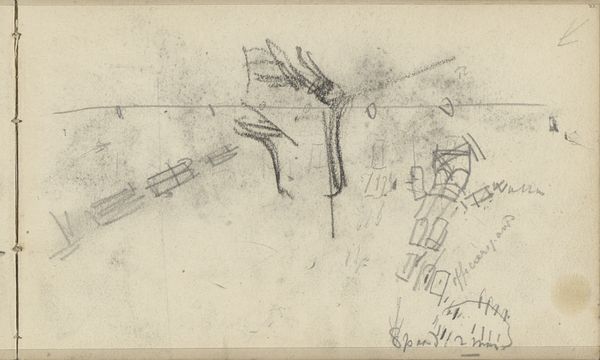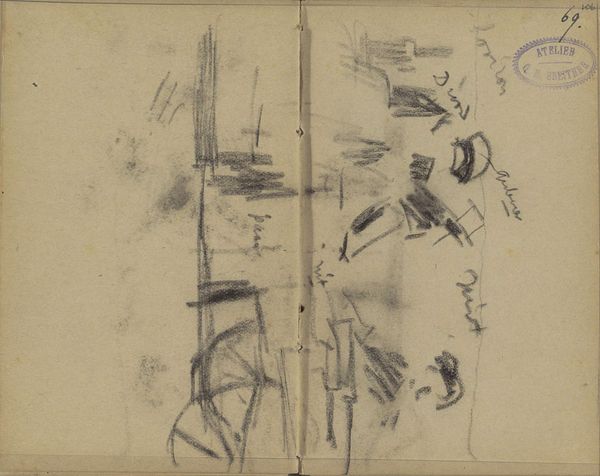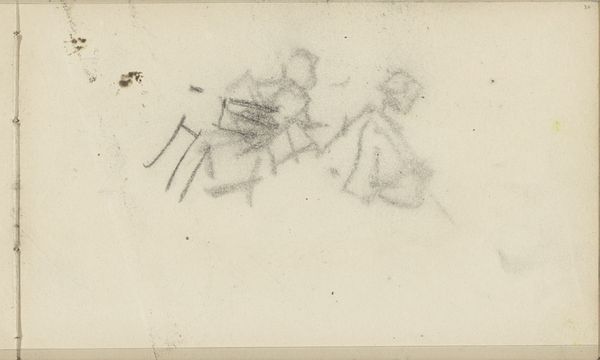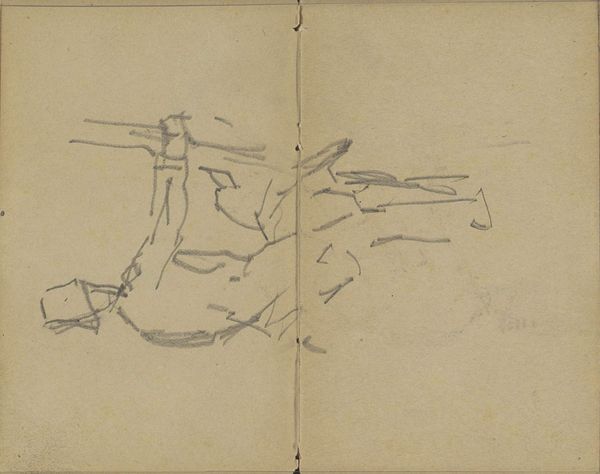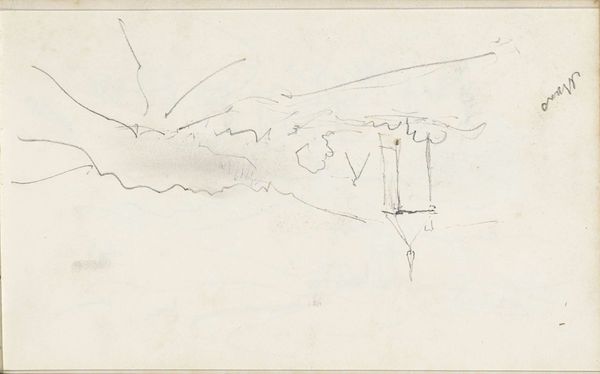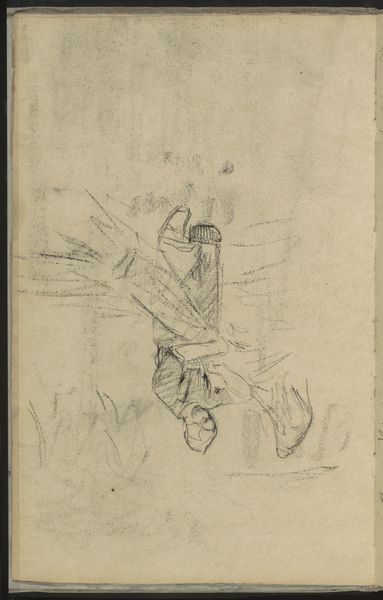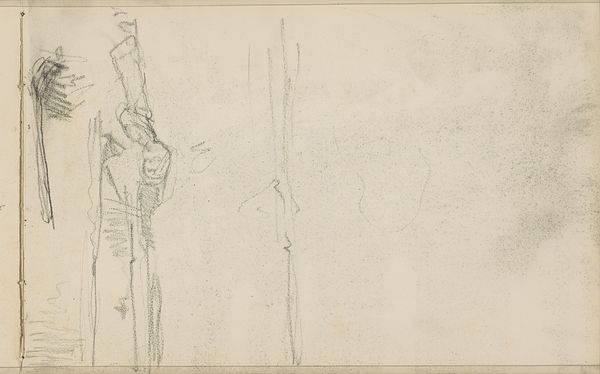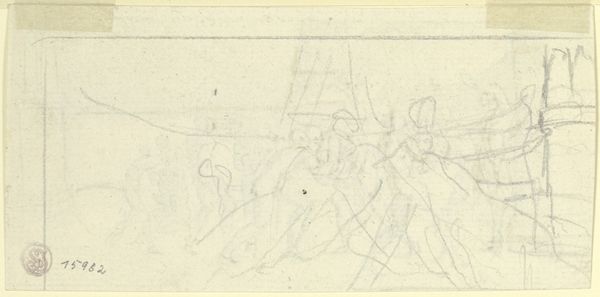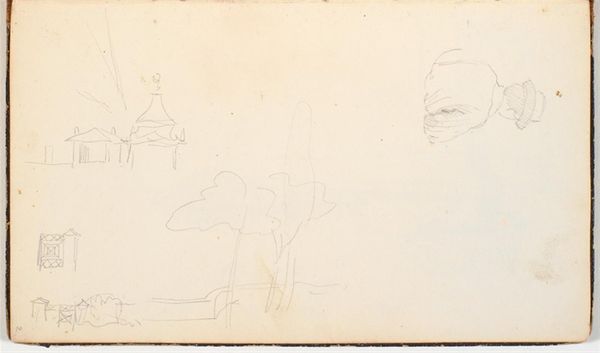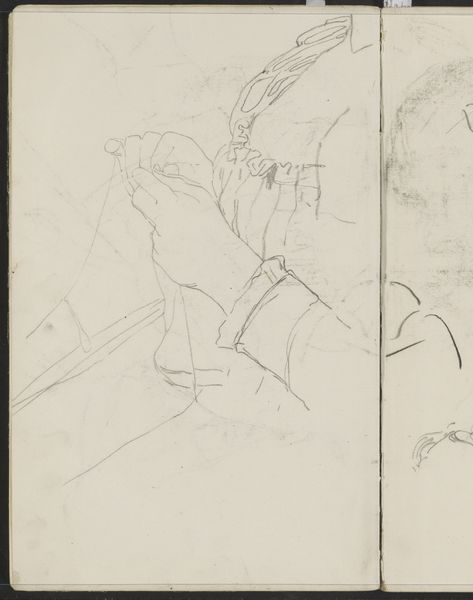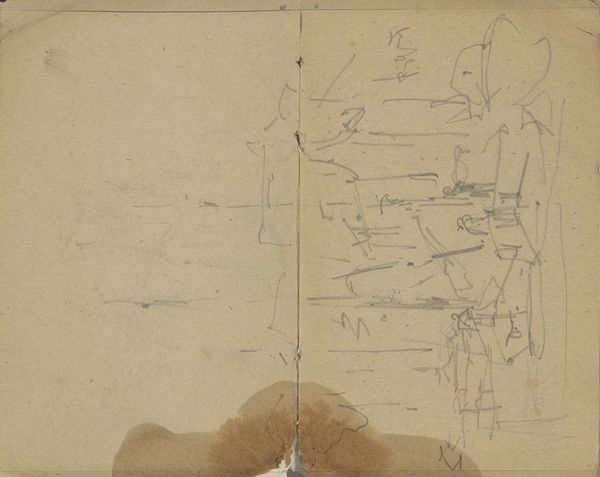
Studienblatt_ Drei flüchtige Skizzen von (eine Fahne hissenden_) Figuren um einen Mast
0:00
0:00
drawing, paper, pencil
#
portrait
#
drawing
#
16_19th-century
#
paper
#
sketch
#
pencil
Copyright: Public Domain
Editor: So, this is "Studienblatt: Drei flüchtige Skizzen von (eine Fahne hissenden_) Figuren um einen Mast," a pencil drawing by Louis Ferdinand von Rayski, made sometime in the 19th century. It's so light, almost ghostly, but the scene seems dynamic, full of effort. What strikes you about it? Curator: The drawing foregrounds the means of production. Look at the visible pencil strokes, the unworked paper – Rayski isn't trying to hide the labor. The roughness challenges the idea of art as solely about the finished product; it’s also about the *doing*. Where do you think these figures are situated in the social landscape, based on how they are portrayed? Editor: That's a good point about the visible process! Hmm… based on their clothes, they are likely working-class, laborers perhaps, caught in a moment of collective action. Is Rayski celebrating this, or merely documenting? Curator: It's fascinating to consider how Rayski represents labor. Is he romanticizing it, or offering a more realistic view of their collective effort? How does the medium – a quick sketch on paper – itself contribute to our understanding of labor and its representation? Editor: Maybe the sketchiness suggests a fleeting moment, a glimpse into their lives without idealizing it? Also, using simple materials like paper and pencil kind of mirrors the laborers' own access to tools and resources. Curator: Precisely! The materials become crucial indicators of both artistic process and social context. Do you think it matters that this piece resides now within the collection of the Städel Museum, separated from its original social environment? Editor: Definitely. It shifts the context. What was likely a study becomes an art object. But the raw quality makes us still consider it an early stage. Thanks, this helped see it through a completely different lens. Curator: Indeed. Seeing art through its materiality brings forward issues of production, class, and cultural value.
Comments
No comments
Be the first to comment and join the conversation on the ultimate creative platform.
